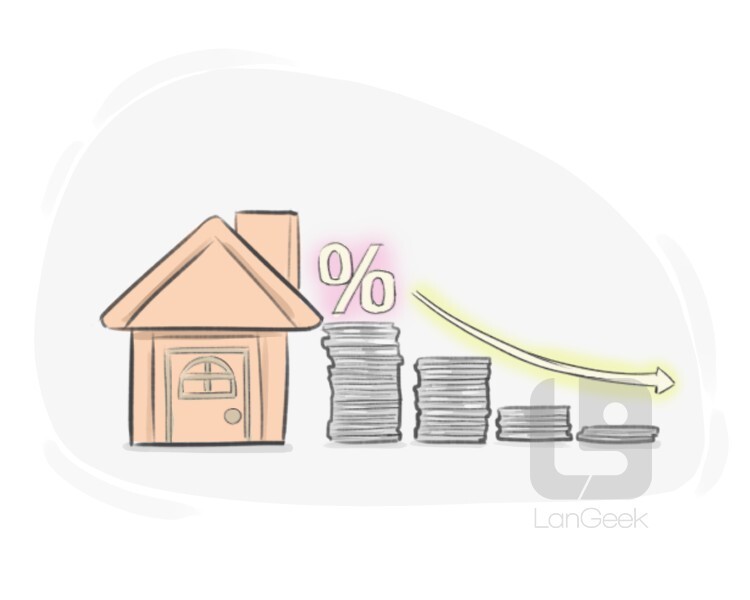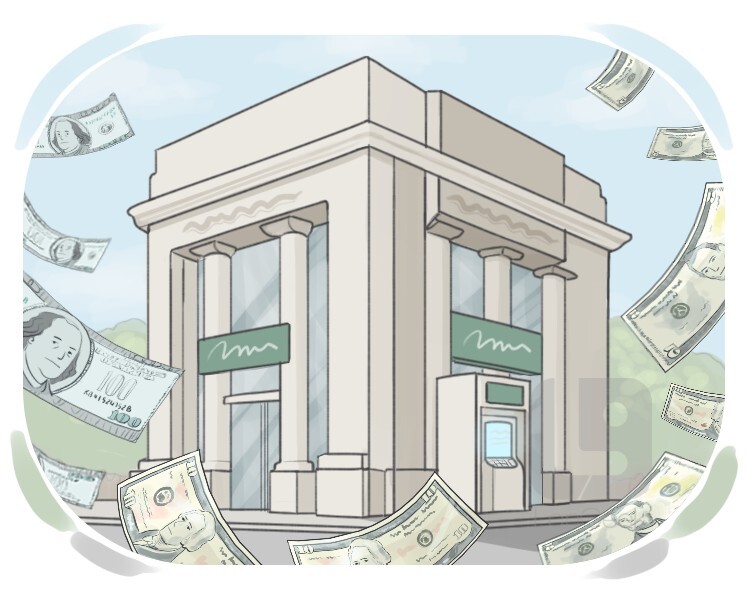a bank account that allows frequent deposits and withdrawals, typically using checks, with no prior notice required
Grammatical Information:
the amount that a lender charges a borrower for the use of money, typically calculated based on the amount of the loan and the length of the borrowing period
Grammatical Information:
a deficit in a bank account caused by withdrawing more money than is available
a service that an organization or a piece of equipment offers you
to merge several financial accounts, debts, funds, into one
Grammatical Information:

an amount of money or a favor that is owed

an amount of money that is paid for something
to collect funds, often through various means such as fundraising, investments, donations, or other financial efforts

an official contract or arrangement by which a bank gives money to someone as a loan to buy a house and the person agrees to repay the loan over a specified period, usually with interest
to put an amount of money or other item of value into a bank account
Grammatical Information:
the act or process of returning the amount of money one borrowed from a bank or other financial institutions

regular and constant for a long period of time

the money that is regularly earned from a job or through an investment
a number that represents how reliable a person or company is when it comes to paying back loans, based on their past financial activity
Grammatical Information:

to provide funds or an amount of money
Grammatical Information:
to become available for use or access
Grammatical Information:
a bank account that pays interest on one's deposited money and is intended to help one save over time
Grammatical Information:
the act of transfering something from one form to another
to have more money in one's account than what one owes or what was initially invested
to withdraw more money from a bank account than is available

in debt due to spending more than one's earnings
The phrase "in the red" originates from the practice of using red ink to indicate negative amounts or deficits in financial records and accounting ledgers. This idiom is used to describe a financial situation where expenses exceed income, resulting in a negative balance or deficit.

the sum of money that needs to be payed for a thing or service
the cost of borrowing money, usually expressed as a percentage of the amount borrowed

the management and handling of financial matters or transactions

connected to or via the Internet

an electronic device that enables individuals to perform financial transactions, such as withdrawing cash, without the need for human assistance
Grammatical Information:
a tax paid to the government each year by a business or an individual based on their income
a tax on the estate of the deceased person
the taxes that are paid to the government when goods are moved from a country to another
a tax that is measured by the amount of business done (not on property or income from real estate)
a government-imposed tax on imported or exported goods
(of goods) able to be imported without paying tax on them
a tax put on the value added to a product at each stage of the supply chain, affecting the final price which the consumer pays

a company or group of people that are considered as a single unit by law
a sum of money that has to be paid, based on one's income, to the government so it can provide people with different kinds of public services
Congratulations! !
You learned 35 words from undefined. To improve learning and review vocabulary, start practicing.
Review
Flashcards
Spelling
Quiz
